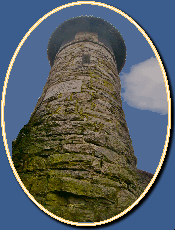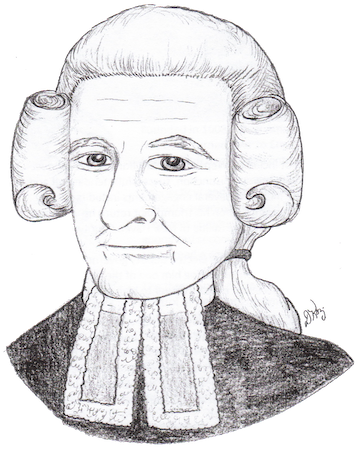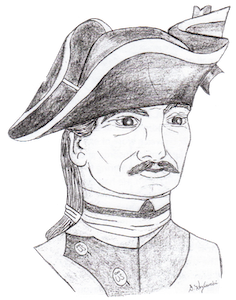wore many hats; ‘exemplarily; holy,’ he also fathered 10 children
Samuel Andrew (1656-1738), born at Cambridge, Massachusetts, on January 29, 1656, died at Milford, Connecticut, January 24, 1738, was a man of several hats: A distinguished scholar, college trustee and president, educator, clergyman and son-in-law of the governor of the Connecticut Colony. He also was the father of 10 children.
Andrew was perhaps the most distinguished trustee of a major university. Four years after his graduation from Harvard in 1675 at age 19, the university named him a fellow and tutor. He held that post for five years. During the temporary absences of Harvard Presidents Uriah Oakes and John Rogers, Andrew was named interim president of the Cambridge, Mass. School. This was considered to be a remarkable feat since he was in his 20s at the time. Three other individuals who had studied under Andrew at Harvard, James Pierpoint, Noadish Russell and Joseph Webb, would later join him as trustees of the new Collegiate School (Yale College).
On Nov. 18, 1685, Andrew was ordained as the third pastor of the First Congregational Church in Milford as the successor to Roger Newton and Peter Prudden. Shortly after his ordination he was married to Abigail Treat, daughter of Robert Treat, eighth governor of Connecticut. For more than half a century Andrew remained in Milford, becoming one of the most prominent and respected members of the clergy in all of the Connecticut Colony. A noted scholar, Andrew rarely left his study. Visiting the ill, counseling the poor, or officiating at weddings or funerals, therefore, always were left to the elders and deacons of the church. Andrew did, however, take an active role in the founding of Yale and agreed to serve as one of its trustees of the school. Andrew also accepted the post of rector pro tempore, taking charge of the senior class that moved to Milford.
While a trustee, Andrew saw the new school enter a period of decline that would last 10 years. He faced series of problems with which he did not or could not deal while the trustees became divided on almost all of the issues. Among them were mounting financial difficulties and a drained Connecticut treasury which made it difficult to provide funds upon which it depended to continue to function. Meanwhile, the split campuses at Milford and Saybrook contributed to disunity among students Moreover, students were dissatisfied since the lodgings in Saybrook were far from adequate and they were dissatisfied with their tutors. By 1710, only three students were graduated. As a consequence, although Andrew was recognized as a distinguished scholar and a good teacher, he gained a dubious reputation for being a poor administrator.
The most noteworthy event of Andrew’s administration occurred when 12 ministers, including nine college trustees, and four lay persons met in 1708 to formulate the Saybrook Platform that provided that every officer of the Collegiate School had to publicly accept the confession of the faith adopted by the Saybrook Synod. The orthodox Calvinist faith, therefore, became the officially adopted creed of the school and was strictly taught to its students. During Andrew’s administration and for some time afterward, most graduates went into the ministry.
Although the new college had accumulated one of the most extensive book collections in New England, mainly from Jeremiah Dummer, a Harvard graduate and the Massachusetts Bay Colony's and later Connecticut's agent in London, many problems remained unresolved. Students were growing increasingly unhappy with what they considered to be poor quality of their instructors and factionalism festered among the staff and the various educational locales. Meanwhile, the Rev. Andrew appeared to do little to resolve the issues and rarely ventured away from Milford. He made no secret, in fact, of his interest of being relieved of his position within the school.
In 1718, Harvard alumnus Cotton Mather who had become disillusioned with the liberality of his alma mater, wrote to a wealthy London merchant Elihu Yale to solicit aid for the new college in Connecticut. By the end of that year Yale was convinced to make a contribution of goods which were in turn sold in Boston for approximately £560 which remained the largest private donation made to the college for at least a century. In appreciation, trustees named the newly consolidated school building at New Haven after Yale and soon after renamed all the enterprise Yale College. In 1719, Yale trustees named Andrew’s son-in-law Timothy Cutler as Yale’s rector. Although Andrew was relieved to no longer head the college, he remained as a trustee and even officiated at commencements for several years.
Among his Collegiate School students was Ebenezer Martin. Reverend Martin would marry Susanna Plumb of Milford and father Joseph Plumb Martin, the future revolutionary warrior and chronicler and a fellow member of the Milford Hall of Fame.
Until his death on Jan. 24, 1738, Andrew continued his pursuits of scholarship and preaching with great distinction. His memorial tablet in the First Congregational Church of Milford states that he was “A man of exemplary holiness and unwearied labors, modest, courteous and beneficent.”
Andrew was predeceased by his wife Abigail and survived by many children.



